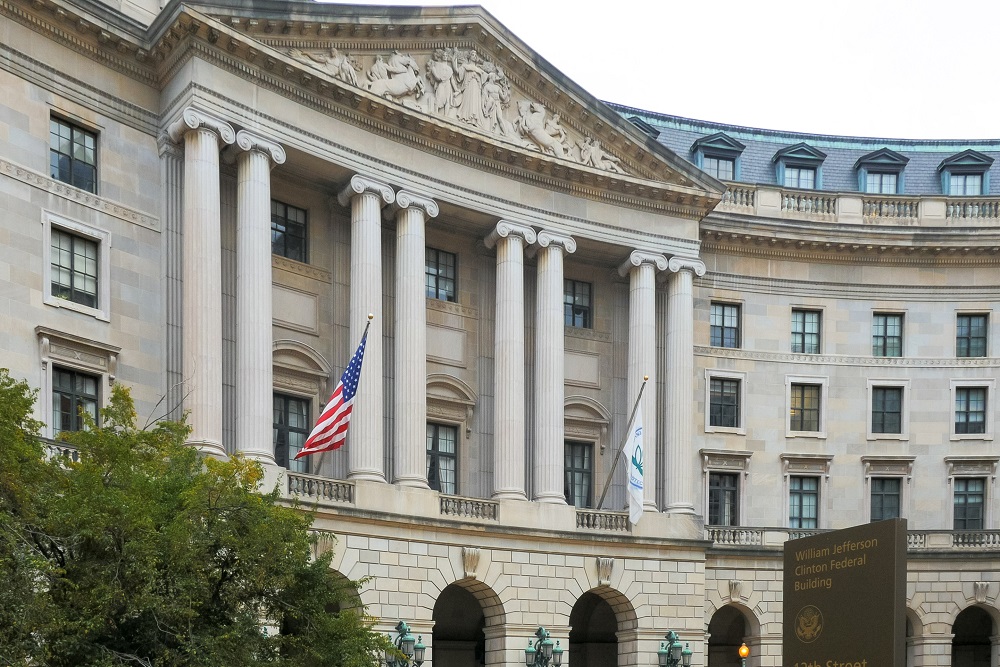Former President Donald Trump’s “secret science” rule is currently the subject of scrutiny in lawsuits filed by states, cities, a county, and concerned environmental groups. In the latest filing, on January 20, 2021, a coalition of 18 states, 3 of the nation’s largest cities, and 1 county filed suit against the EPA over the Strengthening Transparency in Regulatory Science rule in the U.S. District Court for the Southern District of New York on February 19, 2021.
The lawsuit, led by the state of New York, calls the Agency to task over its “final rule that restricts how science can be used in future agency rulemaking,” according to Bloomberg Law.
The final rule was fast-tracked and published on January 6, 2021, and was claimed to be “immediately effective,” although rules generally become effective 30 days after publication in the Federal Register. It “restricts the agency’s ability to use scientific studies that include patients’ private medical data when issuing regulations,” according to Bloomberg Law. “It represents a sharp break from an decades-old approach to new rules, which relied on those kinds of studies to issue some of its most expansive regulations, including air quality standards for fine particle pollution.”
In one of his final acts in office, as what some have termed one of EPA Administrator Andrew Wheeler’s boldest moves, Wheeler announced the science transparency rule on January 5, 2021.
When he announced the rule, “Wheeler immediately sought to downplay the significance of the rule, which his critics called an Orwellian effort to hamstring the EPA,” according to Inside Climate News. “‘There is no scientific study based on this rulemaking that will be absolutely ruled out from use by the agency,’ Wheeler insisted.
“He noted that his successors will have the discretion to include pivotal studies, regardless of the new restrictions on science based on confidential health data,” Inside Climate News continues.
“The EPA under President Donald Trump framed the rule as a bid to increase transparency, but environmentalists and congressional Democrats argued it was a thinly-veiled attempt to block the agency from writing tough new rules,” according to Bloomberg Law.
The New York lawsuit alleges “the Federal Housekeeping Statute—which the Environmental Protection Agency relied on the as the basis of its Strengthening Transparency in Regulatory Science rule—grants no authority to the agency,” Bloomberg Law adds. “The EPA doesn’t appear on the list of executive departments covered by the statute.”
The lawsuit also claims that the rule goes against the EPA’s obligation to utilize the most recent scientific knowledge available as mandated by statutes such as the Clean Water Act (CWA) and Clean Air Act (CAA).
The complaint claims the Agency “acted arbitrarily and capriciously by failing to provide a reasoned explanation of how or why EPA’s longstanding practices are inadequate, or how the new procedures would enhance the scientific integrity of EPA’s rulemaking.”
The lawsuit claims states will suffer harm from the rule because it “will force them to spend resources doing their own research and enacting more protective standards than the EPA’s,” according to Bloomberg Law. “Some states have limited expertise to do that, according to the suit.”
Additionally, according to the lawsuit, many federal regulations “explicitly preempt States from adopting more stringent standards than EPA.”
New York was joined in the suit by the states of California, Pennsylvania, Illinois, Michigan, and New Jersey, as well as the cities of New York; Los Angeles; Chicago; and King County, Washington.
Montana Case Ruling
Envt’l Defense Fund v. EPA was filed in the U.S. District Court for the District of Montana, Great Fall Division. That suit made many of the same claims as the latest filing in New York. The Montana court issued a decision on January 27, 2021, that ruled the “EPA unlawfully made the Final Rule effective immediately on publication in the Federal Register” and declared “the Final Rule is ineffective until 30 days from its January 6, 2021, date of publication in the Federal Register: February 5, 2021.”
Chief Judge Brian Morris wrote, “EPA failed to show a need for urgent implementation when it took more than two-and-one-half years to finalize this regulation.”
Bloomberg Law notes that “‘[t]he Trump administration broke the law by issuing a harmful rule to censor life-saving medical science, and broke the law again by trying to make the rule immediately effective,’ Environmental Defense Fund senior attorney Ben Levitan said in a statement.”
The Montana court ruling also notes that the Administrative Procedure Act (APA) gives groups the right to petition the EPA to stay the rule while it is in litigation.
Critics of the rule are putting pressure on the Biden administration to dismantle it. Publication of the rule puts it in the review period subject to the Congressional Review Act, which would provide an opportunity to undo it.
“But regulatory, legal, and legislative solutions each come with their own pitfalls, observers say—not least because of the opposition they’re likely to get from the rule’s defenders,” cautions Bloomberg Law.

